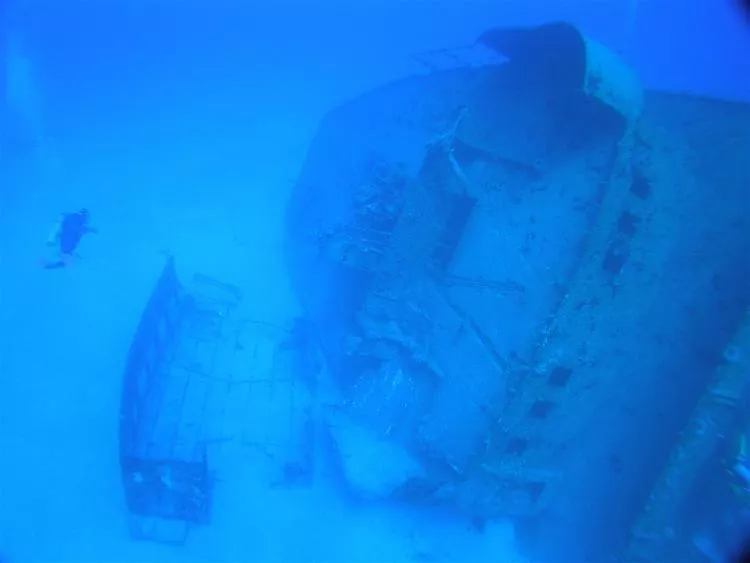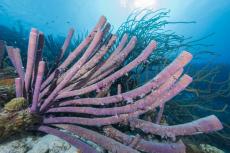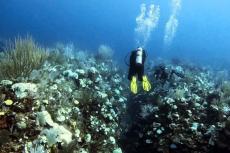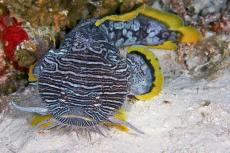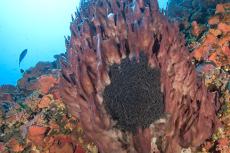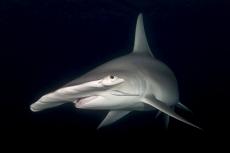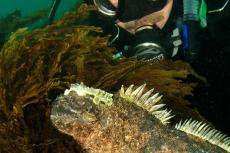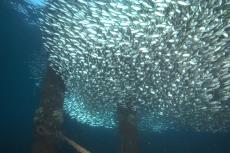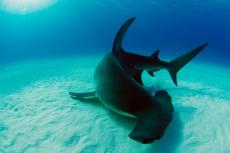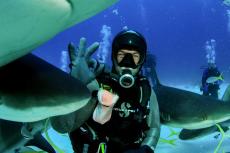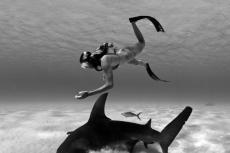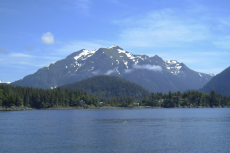First off, a confession. I love diving in Roatan. Why? For a couple of reasons. Number one—the reefs around the island are still in superb shape. Not a lot of ocean-going pelagics, it’s true. But I’ve been diving the reefs of the Caribbean for more than ten years, and I would rank Roatan in the top two. (Bonaire would be my other choice.)
Contributed by
And yet the most common reaction I get when I tell people I’m off to dive in Roatan is, “Isn’t that somewhere in South America?” Roatan, it seems, remains something of an undiscovered treasure. So, I’ve decided to change that. For those divers around the world who haven’t discovered my little corner of the Caribbean, consider this a primer, a sort of Roatan 101: Introduction to the Bay Islands.
Lesson One: The Basics —Where the heck is it?
Roatan is part of the Bay Islands—a chain of islands off the east coast of Honduras. They consist of Roatan, Utila, Guanaja and Cayos Cochinos. The two most frequented dive destinations are Roatan and Utila. There are dozens of good dive operations on both islands and close to a hundred dive sites to be explored on Roatan alone. Now I’m not about to do a complete inventory of all the dive sites I’ve visited; that would be like inflicting home movies on invited guests—a cliché for tedium and social boorishness. What I will do is show off my highlight reel, a kind of sneak preview of the kind of underwater adventures to be experienced.
I break diving in Roatan into three primary areas: the North Shore, the West End and the South Coast. Surprisingly, though the areas are only separated by a few kilometers, the diving can be radically different on each coast.
Lesson Two: The North Shore
One phrase describes the North Shore—coral canyons. The place is teeming with them. They’re lush with hard and soft coral and teeming with small reef life. They’re some of the best I’ve ever experienced, with overhangs so vast that the dive often seems more like a cavern dive.
Now another confession: I won’t pretend that I don’t have favorite places to dive and preferred operations to dive with on Roatan. Frankly, I just don’t believe it’s possible to be some kind of unbiased writing machine. So instead, I tell people about my biases up front, and I try to be as fair as I can.
When I’m diving the North Shore, my operation of choice is Subway Watersports at Turquoise Bay Resort. I like the place because of the laid back atmosphere—often I’ve been one of only two or three divers on a boat, and we’ve come and gone at our own pace. I also like the fact that from here, you’re literally within minutes of many of the best dive sites in the area.
Rock Star.
Take Rock Star, for example—about a five-minute boat ride from the dive shop. You drop off the boat, sink down to about 75 feet and spend about 50 minutes meandering through a series of impressive coral canyons. The reef life is abundant and healthy: lots of tubes and vibrant blue sea fans hanging from the hard corals, large purple barrel sponges everywhere and mounds of hill and sheet coral. A closer look at the crevices in the canyon wall reveal a thriving macro community—decorator crabs, lobster, juvenile spotted drum fish and yellowtail damselfish and the usual assortment of parrot and angel fish, grunts, squirrel fish and trumpet fish.
Dolphin Den.
A few minutes more by boat and you can dive another one of my favorites, Dolphin’s Den, a series of coral tunnels in shallow water (maximum 15 meters). The site gets its name because deep within the tunnels the skull of a dolphin sits in the back of one of the caves. Our dive master suggests the poor creature may have swum in and become disoriented and drowned.
Aside from the tunnels, the highlight of the dive was finding a large, nearly six-foot nurse shark hanging out in one of the caves. I swam in close and shot picture after picture—it was totally unconcerned.
Another dive of note on the North Shore includes Stingray Passage—a large canyon with overhanging coral walls—very impressive. At one point diving this site, I swam through what seemed to be an endless school of creole wrasse. It was everything I’d come to expect from what turns out to be one of the healthiest reef systems in the Caribbean. On my return trip to the boat we swam through hundreds of black durgeons—scattered across a massive section of shallow reef.
Aside from coral canyons, the North Shore also features a couple of impressive artificial reefs. But to get access to them, its best to move your base of operations a little further west. I prefer to use Anthony’s Key Resort and Dive. This is a massive and very high end operation; if you want to pamper yourself, book a week at their lodge. They run a dozen boats and as many as 80 divers every day. The docks are crowded with divers and tourists but don’t be intimidated by the numbers. The good news is that Anthony’s Key is still first class and only a few minutes by boat from what I would argue is the best dive on the island. (...)

